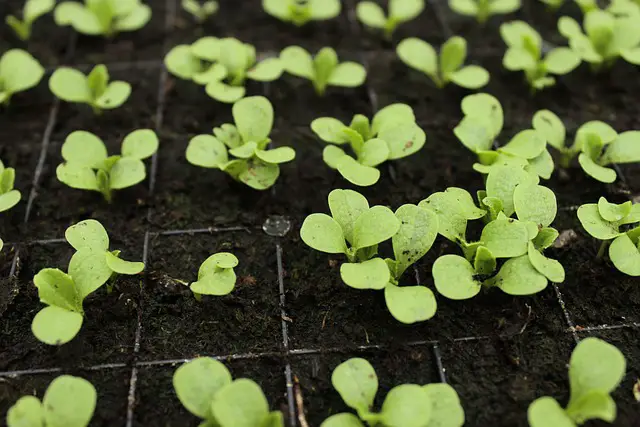White spots on seedling leaves are a common problem that gardeners may face. These spots can be caused by a variety of factors, including fungal infections, pests, and environmental stressors. Identifying the cause of the white spots is crucial for effective treatment and prevention.
Seedlings are particularly vulnerable to white spots, as they are still developing and have not yet built up a strong defense system. Gardeners should regularly inspect their seedlings for any signs of white spots, such as powdery or fuzzy growth on the leaves.
It is also important to note that different plants may be more susceptible to white spots than others. Understanding the causes of white spots on seedling leaves is essential for developing effective prevention strategies.
By taking steps to reduce environmental stressors, such as maintaining proper humidity levels and providing adequate air circulation, gardeners can help prevent the growth of fungal infections and pests.
Additionally, treating seedlings with natural remedies or fungicides can help prevent the spread of white spots.
Key Takeaways
- Identifying the cause of white spots on seedling leaves is crucial for effective treatment and prevention.
- Seedlings are particularly vulnerable to white spots and different plants may be more susceptible than others.
- Preventing white spots on seedling leaves involves reducing environmental stressors and treating seedlings with natural remedies or fungicides.
Check out these other top posts:
Identifying White Spots on Seedling Leaves
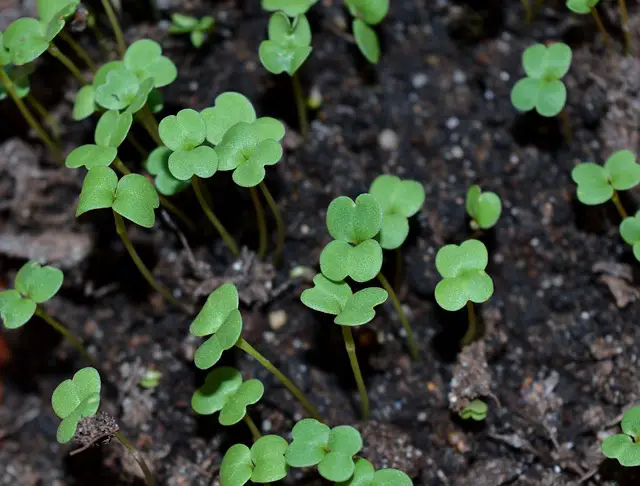
White spots on seedling leaves can be caused by various factors, including pests, diseases, and environmental conditions. Identifying the cause of the white spots is crucial in determining the appropriate treatment and preventing further damage to the seedlings.
One of the most common causes of white spots on seedling leaves is powdery mildew. Powdery mildew is a fungal disease that usually affects the upper part of the leaves but may also grow on the undersides.
The white spots of powdery mildew will spread to cover most of the leaves or affected areas. Young foliage is most susceptible to damage, and leaves may turn yellow and dry out. The fungus might cause some leaves to twist, break, or become disfigured.
Another possible cause of white spots on seedling leaves is leaf spot diseases. Leaf spot diseases weaken plants by interrupting photosynthesis. Most leaf spot diseases affect only a small percentage of the plant’s overall leaf area, and are a minor stress on the health of the plant.
In addition to diseases, white spots on seedling leaves can also be caused by pests such as spider mites and thrips. Spider mites are tiny pests that can be difficult to detect, but they leave behind small white or yellow spots on the leaves.
Thrips, on the other hand, cause white or silver spots on the leaves and can also cause the leaves to curl or twist.
Environmental conditions can also cause white spots on seedling leaves. For example, if seedlings are exposed to high levels of light or heat, they may develop white spots on their leaves. Similarly, overwatering or using water that is too cold can also cause white spots on leaves.
White Spots on Seedling Leaves – 3 Common Problems
White spots on seedling leaves can be caused by a variety of factors, including fungal diseases, pests, and environmental factors. Understanding the causes of white spots on seedling leaves can help gardeners take appropriate action to prevent further damage to their plants.
1. Fungal Diseases
Fungal diseases are a common cause of white spots on seedling leaves. Powdery mildew is a fungal disease that appears as a white, powdery coating on the leaves. This disease thrives in high humidity and moderate temperatures.
Another fungal disease that causes white spots is white rust, which is caused by the fungus Albugo candida. This disease can cause white spots on the leaves, stems, and flowers of plants.
2. Pests
Pests can also cause white spots on seedling leaves. Spider mites are a common pest that can cause white spots on the leaves of plants. These tiny pests feed on the plant’s juices and can cause the leaves to become discolored and spotted.
Another pest that can cause white spots is the whitefly. These small, flying insects feed on the undersides of leaves and can cause white spots to appear on the tops of the leaves.
3. Environmental Factors

Environmental factors can also cause white spots on seedling leaves. High humidity levels can create a favorable environment for fungal diseases to thrive. Lack of air circulation can also contribute to the growth of fungal spores.
Overwatering can lead to root rot, which can cause white spots to appear on the leaves. On the other hand, too little water can cause the leaves to dry out and become discolored.
Specific Plants and Their Susceptibility
Different plants have varying levels of susceptibility to white spots on seedling leaves. Here are some examples of specific plants and their susceptibility to white spots:
1. Tomatoes and Nightshades
Tomatoes and other nightshades, such as eggplants and peppers, are susceptible to white spots on their seedling leaves. These white spots may be caused by fungal infections, such as powdery mildew, or by environmental factors, such as high humidity.
To prevent these white spots, it is important to ensure good air circulation around the plants and to avoid overhead watering. Additionally, planting disease-resistant varieties of tomatoes and other nightshades can help reduce the risk of white spots on seedling leaves.
2. Legumes
Legumes, such as beans and peas, are also susceptible to white spots on their seedling leaves. These white spots may be caused by fungal infections, such as rust, or by environmental factors, such as excessive moisture.
To prevent these white spots, it is important to ensure good drainage around the plants and to avoid overhead watering. Additionally, planting disease-resistant varieties of legumes can help reduce the risk of white spots on seedling leaves.
3. Roses
Roses are susceptible to a variety of diseases that can cause white spots on their seedling leaves. One common disease is black spot, which is caused by a fungal infection.
To prevent black spot and other diseases, it is important to plant disease-resistant varieties of roses and to ensure good air circulation around the plants. Additionally, removing infected leaves and debris from around the plants can help prevent the spread of disease.
4. Cannabis
Cannabis plants, particularly their leaves, can also develop white spots. These white spots may be caused by a variety of factors, including fungal infections, nutrient deficiencies, and environmental stress.
To prevent white spots on cannabis leaves, it is important to maintain a consistent growing environment, including temperature, humidity, and lighting. Additionally, using disease-resistant strains of cannabis and providing proper nutrient balance can help prevent white spots on cannabis leaves.
5. Indoor Plants
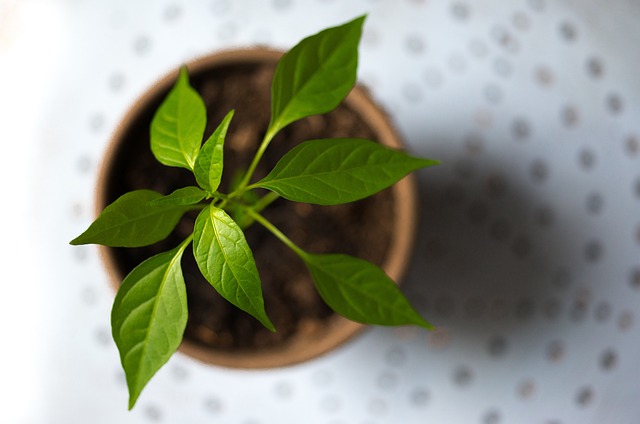
Indoor plants, such as begonias, can also develop white spots on their seedling leaves. These white spots may be caused by a variety of factors, including fungal infections, insect infestations, and environmental stress.
To prevent white spots on indoor plants, it is important to provide proper lighting, humidity, and temperature conditions. Additionally, using disease-resistant varieties of indoor plants and providing proper air circulation can help prevent white spots on seedling leaves.
Prevention Strategies
White spots on seedling leaves can be prevented with proper care and maintenance. Here are some prevention strategies that can help keep your seedlings healthy and free from white spots.
1. Proper Watering and Humidity Control
Overwatering can lead to high humidity levels, which can encourage the growth of white spots on seedling leaves. It is important to water your seedlings properly and to maintain appropriate humidity levels.
Seedlings should be watered when the soil is dry to the touch, and excess water should be drained from the tray or pot. It is also important to avoid watering from above, as this can lead to excess moisture on the leaves.
Instead, water from below by placing the tray or pot in a larger container of water and allowing the soil to absorb the water.
2. Effective Fertilizing
Fertilizing your seedlings can help them grow strong and healthy, but it is important to do so in a way that does not encourage the growth of white spots. Avoid over-fertilizing, as this can lead to excess nitrogen in the soil, which can promote the growth of fungi. Instead, use a balanced fertilizer and follow the instructions carefully.
3. Prudent Pruning
Pruning can help keep your seedlings healthy and encourage strong growth, but it is important to do so in a way that does not damage the leaves or create wounds that can be susceptible to infection. Use clean, sharp pruning shears to make clean cuts, and avoid pruning in humid conditions.
4. Ensuring Good Air Circulation
Good air circulation can help prevent the growth of white spots on seedling leaves. Make sure your seedlings are not overcrowded, and provide adequate space between plants. Use a fan to increase air flow around your seedlings, and avoid covering them with plastic or other materials that can trap moisture.
By following these prevention strategies, you can help keep your seedlings healthy and free from white spots.
Treatment Options
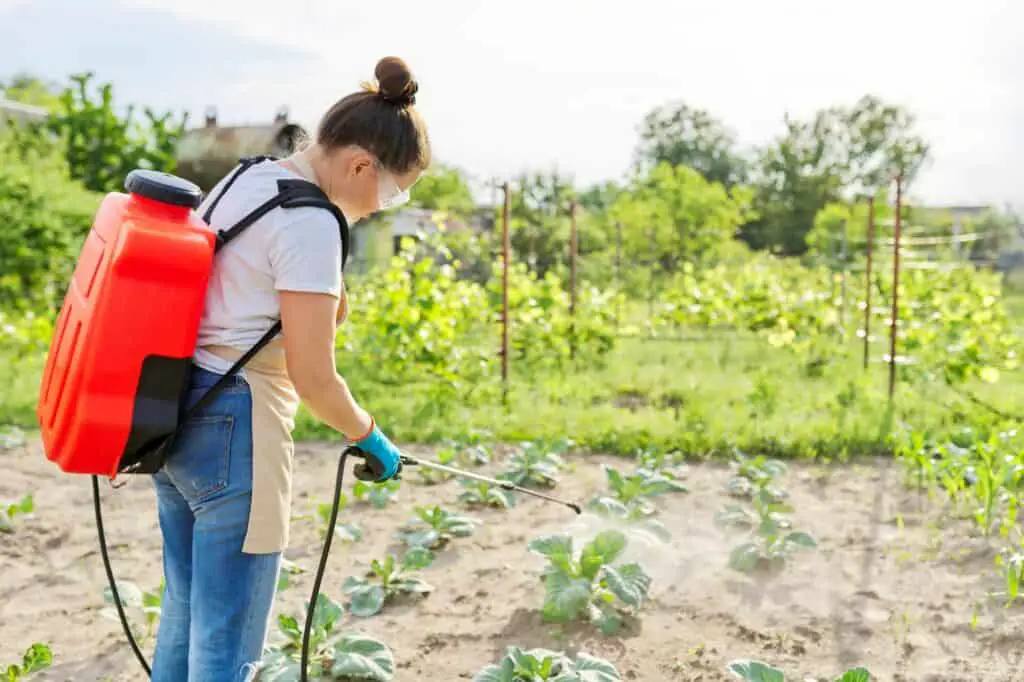
When it comes to treating white spots on seedling leaves, there are several options available. This section will cover some of the most common treatment options, including using fungicides, home remedies, neem oil, and other natural solutions.
1. Using Fungicides
Fungicides are chemical solutions that are designed to kill fungi. They are available in both commercial and homemade varieties. Commercial fungicides can be found at most garden centers and are typically more effective than homemade solutions.
Some common types of commercial fungicides include copper and sulfur-based products.
When using fungicides, it is important to follow the instructions carefully and to wear protective gear, such as gloves and a mask. It is also important to avoid using too much fungicide, as this can damage the seedlings.
2. Home Remedies
There are several home remedies that can be effective in treating white spots on seedling leaves. One of the most popular home remedies is a baking soda solution. To make this solution, mix one tablespoon of baking soda with one gallon of water and spray it on the affected plants.
Another effective home remedy is a milk spray. To make this spray, mix one part milk with two parts water and spray it on the affected plants. Mouthwash can also be effective in treating white spots on seedling leaves. Mix one part mouthwash with three parts water and spray it on the affected plants.
3. Neem Oil
Neem oil is a natural solution that is effective in treating white spots on seedling leaves. It is available at most garden centers and can be applied using a spray bottle. To use neem oil, mix one tablespoon of the oil with one gallon of water and spray it on the affected plants.
4. Other Natural Solutions
In addition to neem oil, there are several other natural solutions that can be effective in treating white spots on seedling leaves. One such solution is a potassium bicarbonate spray. Mix one tablespoon of potassium bicarbonate with one gallon of water and spray it on the affected plants.
Another natural solution is a sodium bicarbonate spray. Mix one tablespoon of sodium bicarbonate with one gallon of water and spray it on the affected plants. Adding a small amount of liquid soap to the spray can also help to make it more effective.
Identifying and Dealing with Recurring Problems
White spots on seedling leaves can be a sign of powdery mildew, a common fungal disease that affects many plants. This disease is easily recognizable by the powdery white spots that appear on leaves, stems, and sometimes fruit. The spots can spread quickly, and if left untreated, can cause significant damage to the plant.
Powdery mildew is often caused by high humidity, poor air circulation, and low light conditions. The disease can also be spread by aphids and other insects that feed on the leaves of infected plants.
To prevent powdery mildew from recurring, it is essential to identify and remove infected plants and diseased parts as soon as possible. Lower leaves are particularly vulnerable to infection, so it is important to monitor them closely.
In addition to removing infected plants and parts, there are several steps gardeners can take to prevent powdery mildew from spreading. These include:
- Maintaining good air circulation by spacing plants properly and pruning regularly
- Watering plants at the base rather than from above to prevent excess moisture on the leaves
- Providing adequate light and avoiding over-fertilization, which can promote rapid growth and weaken plants
- Overwintering plants in a cool, dry location to prevent the disease from taking hold
By following these steps and monitoring plants closely, gardeners can prevent powdery mildew from recurring and keep their seedlings healthy and strong.
Frequently Asked Questions
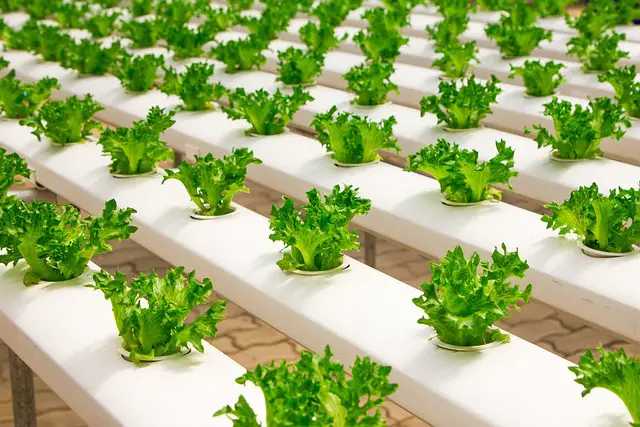
How to treat white spots on seedling leaves?
Treating white spots on seedling leaves depends on the underlying cause. If the spots are caused by a fungal infection, removing the affected leaves and applying a fungicide can help.
If the spots are caused by pests, such as spider mites or aphids, using an insecticidal soap or neem oil can help control the infestation. It is important to identify the cause of the white spots before attempting to treat them.
How to get rid of white spots on seedling leaves?
Getting rid of white spots on seedling leaves involves identifying and addressing the underlying cause. As mentioned above, if the spots are caused by a fungal infection, removing the affected leaves and applying a fungicide can help.
If the spots are caused by pests, using an insecticidal soap or neem oil can help control the infestation. It is also important to maintain proper growing conditions, such as providing adequate light and avoiding over-watering, to prevent the development of white spots.
What are the white dots on seedling leaves?
The white dots on seedling leaves can be caused by a variety of factors, including fungal infections, pests, nutrient deficiencies, and environmental stress. Proper identification of the cause is important for effective treatment.
How do you treat white spots on leaves?
Treating white spots on leaves involves identifying the underlying cause and addressing it accordingly. As mentioned above, if the spots are caused by a fungal infection, removing the affected leaves and applying a fungicide can help.
If the spots are caused by pests, using an insecticidal soap or neem oil can help control the infestation. It is important to maintain proper growing conditions and address any nutrient deficiencies to prevent the development of white spots.
What nutrient deficiency causes white spots on leaves?
A nutrient deficiency in calcium can cause white spots on leaves. This is known as tip burn and is characterized by white spots or patches on the tips of leaves. Providing adequate calcium through fertilization or adjusting the pH of the growing medium can help prevent this deficiency.
Why do seedling leaves turn white?
Seedling leaves can turn white due to a variety of factors, including fungal infections, pests, nutrient deficiencies, and environmental stress. Proper identification of the cause is important for effective treatment.
Maintaining proper growing conditions and addressing any nutrient deficiencies can help prevent the development of white spots on seedling leaves.

Hey, I’m Lisa and I’ve been an avid gardener for over 30 years. I love writing, talking and living in the garden! Feel free to connect with me on my socials below

